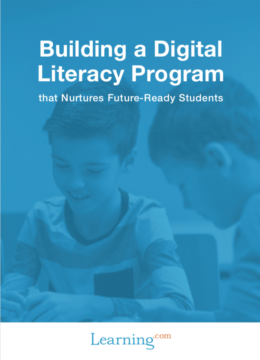Developing and implementing a digital literacy program across your school or district helps ensure digital equity for all of your students. You can even offer a digital literacy program without hiring specially trained technology teachers — a big plus with the current teacher shortage many regions are experiencing.
Our free, newly updated ebook “Building a Digital Literacy Program that Nurtures Future-Ready Students,” breaks the process down into four clear steps, and walks you through each one:
- Identify your vision for your digital literacy program
- Choose the implementation model
- Ensure standards are aligned vertically and horizontally
- Empower teachers to deliver the digital literacy program
“Digital literacy is not just another program in a long list of them; it is the program. At its core, this program aims to transform the ways students learn by empowering them with technology skills to succeed in their future.”

Christine Byrd
Author at Learning.com
Christine has over 17 years of experience as an award-winning writer, thorough researcher, detail-oriented editor, and communications strategist. She specializes in providing internal and external communications for corporate, academic and nonprofit leaders.
Further Reading
Examples of Abstraction in Everyday Life: How Students Already Use Computational Thinking
Computational thinking, though often perceived as a concept limited to technology or coding, is a valuable problem-solving skill that students...
Understanding Abstraction: Everyday Examples and The Role of Abstraction in Computational Thinking
Abstraction is an essential concept in computational thinking and problem solving, but it’s often one of the more challenging aspects to grasp. This...
7 Examples of Algorithms in Everyday Life for Students
For students new to coding, the process of algorithmic thinking can be challenging. Instead of providing an answer to a question—or even showing the...





